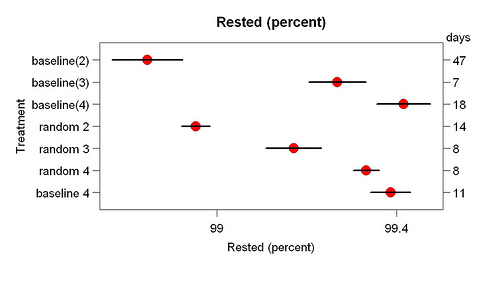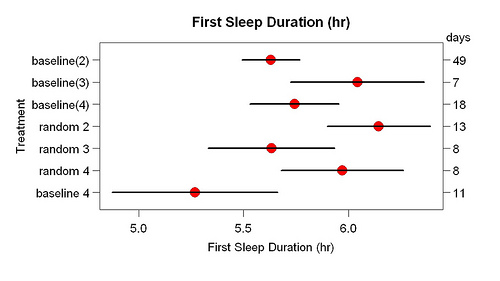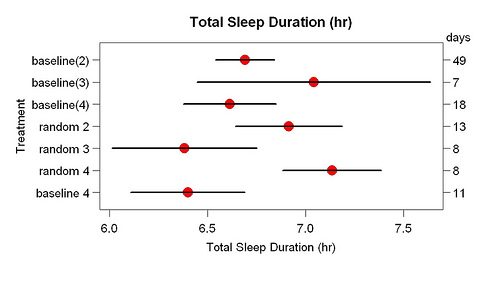Robert Delaney is a geologist who does environmental cleanup in Michigan. While cleaning up an abandoned military base, he found remarkably high contamination by a chemical called PFOS. He had been wondering what causes autism. He came across a rodent study that found that the combination of PFOS and ultrasound was much more damaging to the nervous system than either alone. (See also this study.) He remembered that study when he read my posts about ultrasound and autism. He wrote to me:
You will know the chemical PFOS (perfluorooctane sulfunate) from spray-on fabric treatments that protect clothes from stains and water. IÂ want to tell you about the possible connection between PFCs (perfluoroalkyl chemicals, especially long chain PFCs) and autism. Â I learned that mice and rats contaminated with PFOS, a PFC, when exposed to ultrasound convulsed and died. Â I was reminded of that finding when I read your blog about Caroline Rodger’s idea that prenatal ultrasound causes autism. Â I have thought that PFCs were causing autism for some time. I wondered if lower levels of PFOS would cause some type of brain injury, short of convulsions and death, when the mice were exposed to ultrasound.
I work on cleaning up military sites and attend a lot of related conferences and meetings.  I am working on a focus group with the Association of State and Territorial Waste Managers Organization that is looking at emerging contaminants (contaminants that are not regulated or so recently regulated they are still a problem). Because of that, I was recently made aware of the PFCs because the military had identified these contaminants in firefighting foams.  I was doing a cleanup at the former Wurtsmith Air Force Base in Michigan.  I decided we should check for PFOS and PFOA at the site. There were high levels of both PFOS and PFOA even though it was 20 years since the based had been used. When we checked groundwater, we found it in every well at every depth.  In my 25 years in the environmental business I have never seen anything like it.
I started researching the chemicals as it was apparent that I would have to deal with them. Â I discovered that at least 98% of Americans have them in their blood. That isn’t surprising because they are in everyday products such as food wrappers and popcorn bags, shampoos, cleaning supplies, carpeting, furniture materials, clothing, and dental floss. They are used in firefighting foams, pesticides, automotive parts, computers, electronics, and lubricants. Â They have ended up in our food supply and drinking water.
I had been researching the occurrence of autism for other reasons.  It had occurred to me that whatever was causing the dramatic rise in autism around much of the world, it had to be ubiquitous in the environment, of recent origin, with increasing use, and found in at least the US, Canada, Europe, Japan and Australia where the autism rates were exploding.
PFCs fit these characteristics. Â They are found around the world in mammals, birds, fish, shellfish, etc. Â In fact, the Canadian government reported that the blood levels of PFCs in polar bear above the Arctic Circle were higher than the levels of any pesticides they had ever measured.
Research in the Great Lakes Region is showing high levels of PFOS in the lakes. In some places in the Lakes the contamination exceeds preliminary drinking water standards. Because these are huge bodies of water, to have so much contamination is amazing. High concentrations have been found in mink, fish, gull eggs, eagles, etc. around the Great Lakes. Fish and drinking water in Minnesota have been impacted over large areas. Europe has now banned PFCs for most applications.
What got me wondering about autism and PFCs was that in lab animals and in test tube experiments with human brain cells they are developmental neurotoxins. Many chemicals are neurotoxins, such as chlorinated pesticides and other chlorinated compounds (such as PCBs), organic mercury, and lead. Â However, we in the western world have been aware of these facts and for the last thirty years have been reducing use and exposure to these chemicals. Â But while we have been reducing our exposure to mercury, lead, and so on, neurologic diseases have been on the rise. Â No one suspected PFCs were harmful to humans. Their use has continued to increase.
The half life of the chemicals in our body is around 5 years, so in 5 years, if you have not gotten any more exposure to PFCs, half of them would still be in your body.
There are a lot of reasons to think PFCs may cause autism. Here are a few. First, the company that invented PFCs (3M) is located in Minnesota. There is widespread PFC contamination in Minnesota. As I was preparing a talk last week, I googled…”autism state rates.”  The first site to pop up listed Minnesota as having the highest levels of autism of any state. New Jersey has unusually high PFO contamination of drinking water; they also have a very high level of autism. The military, which has used a great deal of fire-fighting foam, has double the rate of autism of the general U.S. population.
In laboratory experiments PFCs influence brain wiring. The impact of PFCs in some mammals is sex-dependent with males being more affected; autism is 4 times more common in boys than in girls. PFCs are associated with repressed immune systems in animals which has been associated with autism as well. Deranged behavior/ADHD behavior has been reported in PFOS-exposed mice. Â ADHD in children has been associated with prenatal exposure to PFCs.
Unfortunately, the EPA did not include PFCs in their list of chemicals that might be causing autism. My colleague and I have put together a web page if people want more information: https://www.autism-pfos.net/
Yes, why does Minnesota have such high autism rates? It is not an industrial state. It is not a rich state. Yet it is where PFCs were invented and manufactured in large amounts (e.g., ScotchGuard). I can’t think of a plausible alternative explanation. The lab results (ultrasound plus PFOS far more damaging than either alone) makes perfect sense: If there is a bad molecule in neural tissue, it is going to do a lot more damage if you start shaking it, which is what ultrasound does.
 This shows means and standard errors. The number of days in each condition are on the right.
This shows means and standard errors. The number of days in each condition are on the right.
